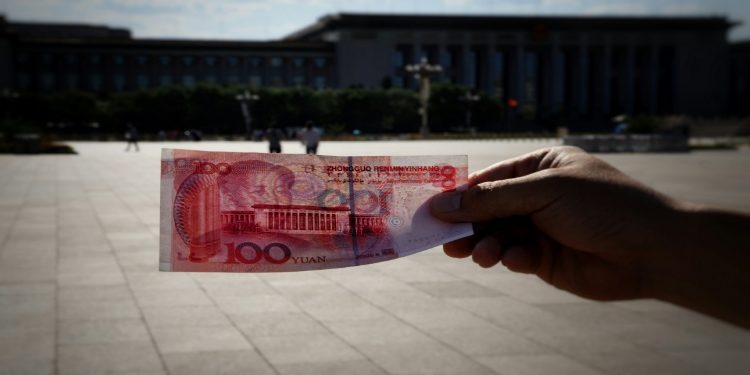Introduction
China’s ambitious push towards a cashless society has gained significant momentum with the development and implementation of the E-Yuan, its digital currency. As the world’s second-largest economy, China’s embrace of digital currency represents a paradigm shift in global finance. This article aims to delve deep into the intricacies of the E-Yuan, exploring its development, technology, societal impact, international implications, challenges, and prospects. In addition, if you are looking for a website that helps people learn about investments by connecting them with investment education companies that can help them receive the right information, you may visit yuanglobalize.org.
The Need for a Digital Currency
The need for a digital currency in China stems from the rapid decline in cash usage and the meteoric rise of digital payment platforms. Cash transactions have dwindled as more Chinese consumers and businesses turn to convenient and secure digital payment methods. Platforms like Alipay and WeChat Pay have become ubiquitous, dominating the Chinese payment landscape. Recognizing the changing dynamics of finance, China embarked on the journey to create its digital currency, the E-Yuan.
Development and Implementation
The development of the E-Yuan has been a meticulously planned process overseen by the People’s Bank of China (PBOC), the country’s central bank. The PBOC initiated pilot programs in several cities to test the feasibility and functionality of the digital currency. These pilot programs involved collaboration with commercial banks and major tech companies to create a robust infrastructure for the E-Yuan. Additionally, China has been proactive in seeking international partnerships to facilitate the cross-border use of digital currency.
Technology Behind E-Yuan
At the heart of the E-Yuan lies advanced blockchain technology, which ensures transparency, security, and efficiency in transactions. Blockchain provides a decentralized ledger system that records every E-Yuan transaction, enhancing trust and mitigating fraud. The E-Yuan’s design incorporates sophisticated encryption methods to safeguard user privacy and prevent unauthorized access. Moreover, the scalability of blockchain technology enables the E-Yuan to handle a vast volume of transactions seamlessly.
Impact on Chinese Society
The widespread adoption of the E-Yuan is reshaping various facets of Chinese society, from everyday transactions to financial inclusion and government oversight. With the convenience of digital currency, Chinese consumers can make payments swiftly and securely, eliminating the need for physical cash. Small businesses, in particular, benefit from reduced transaction costs and increased efficiency in managing finances. Furthermore, the E-Yuan facilitates financial inclusion by providing access to banking services for underserved populations in remote areas.
However, the proliferation of digital currency also raises concerns about government surveillance and data privacy. The centralized nature of the E-Yuan enables authorities to monitor transactions in real-time, potentially infringing on individuals’ privacy rights. Moreover, the digitization of currency poses challenges for elderly citizens and those with limited access to digital technology, highlighting the importance of inclusive policies in the transition to a cashless society.
International Implications
China’s embrace of the E-Yuan has significant implications for the global financial landscape. The success of digital currency could challenge the dominance of traditional currencies like the US Dollar, especially in cross-border transactions. As China promotes the internationalization of the E-Yuan, it seeks to reduce reliance on the US Dollar and enhance its own currency’s role in global trade. This shift could reshape geopolitical dynamics and influence other countries’ attitudes toward digital currencies.
Challenges and Future Prospects
Despite its potential benefits, the E-Yuan faces several challenges on its path to widespread adoption. Privacy concerns loom large as the centralized nature of the digital currency raises questions about individual autonomy and government surveillance. Additionally, the E-Yuan must contend with competition from other digital currencies, both domestic and international. Cryptocurrencies like Bitcoin pose a decentralized alternative to the E-Yuan, appealing to proponents of financial freedom and decentralization.
Looking ahead, the future of the E-Yuan hinges on its ability to address these challenges while capitalizing on its technological prowess and government backing. Continued innovation in blockchain technology, coupled with proactive regulatory measures, can bolster the E-Yuan’s credibility and utility. Furthermore, international cooperation and partnerships will be crucial in promoting the cross-border use of digital currency and cementing China’s position as a global financial powerhouse.
Conclusion
In conclusion, the E-Yuan represents China’s ambitious vision for a cashless society powered by digital currency. Its development and implementation signify a paradigm shift in global finance, with far-reaching implications for economies and societies worldwide. While the E-Yuan offers numerous benefits, it also presents challenges that must be addressed to realize its full potential. As China continues to forge ahead with its digital currency agenda, the world watches closely, anticipating the dawn of a new era in finance.
David Prior
David Prior is the editor of Today News, responsible for the overall editorial strategy. He is an NCTJ-qualified journalist with over 20 years’ experience, and is also editor of the award-winning hyperlocal news title Altrincham Today. His LinkedIn profile is here.












































































